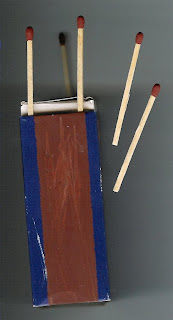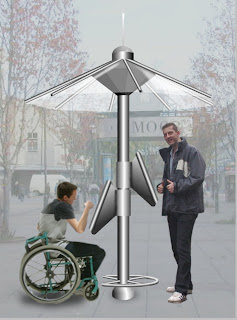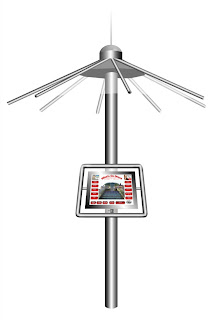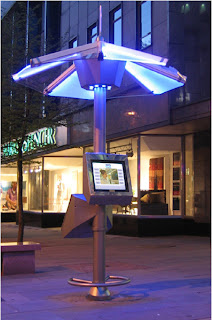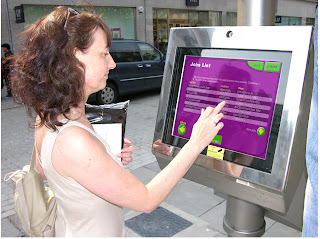Public DataWeb’s definition of Public Access Technology is in the concept of free digital access to the general public.
Most hardware systems and devices such as mobile phones, the IPad etc provide access to the Internet.
The hardware has to be paid for and the connectivity too: line rental, mobile connection charges, ISP fees etc.
As the public obtain more and ever more mobile devices there comes an increasing need for always on, always connected options. Of course the telecoms companies rub their hands thinking of all the associated revenues when people sign up to get connected.
City’s should be thinking about those who are ‘socially excluded’ those who for whatever reason are not able to be connected. Cities should also be aware that business in the city and its region, its visitors and tourists also have need for connectivity. A business in the local wants to reach certain sectors of the public, a tourist wants to know about amenities, places of interest, restaurants etc. These activities should be kept local for all the best commercial interests and public services access and notifications. Can these diverse requirements be left to the ‘market’ alone?
Retailers have adopted bespoke touch screen kiosks to promote their InStore goods catalogues, airports and rail stations use touch screens and websites for ticketing. These services are Free to use. Of course they pay for themselves in payback from sales.
Now a similar function could be provided for the general public in cities, beginning in the city centres where most people congregate. Such a system driven by a touch screen interface out in the streets can give easy access to everyone. Such public Access hubs can also provide a WiFi service. These operations can provide a FREE public service. Linking up to the internet and giving access to all. It can be very secure – only giving access to sites of value on the internet and banning perverse and illegal locations.
Such a free service promotes equality and builds a cohesive platform focused upon each city.
What is needed is the understanding that such a service is in everyone’s interest and it should be encouraged if not funded by the city authorities.
An OVERACHING Public Network; that’s what the service should provide. An Interactive Outdoor infrastructure.
What is meant is this: an inclusive service not an exclusive one.
Currently if you want to use your mobile you probably have to connect via GSM to the Internet if there is no overarching WiFi provided and cities mostly have intermittent hot spots only, whereas the public access network I envisage at least covers all the major city centre streets with a WiFi MESH and touch screen points at strategic street locations.
Also when you are connected on GSM to the internet and you want have everything that’s about the location you are in, it can be costly due to repetitive searches for your need, and can be costly and if your battery holds out you might locate a few things for your itinerary; wouldn’t it be great if your connection was free and the access to all you need was within a cohesive envelope focused upon all the best the city had to offer?
What we mean by this service is a showcase for all businesses thus encouraging local trade: restaurants, bars, transport, tourism, contacting a local official; everything. It’s in the cities interest to keep trade local, to provide tourism services access and local government outreach facilities to its citizens.
Currently every website is there on the internet in its own right often without any interconnections of similar or parallel services connectivity so using that word again what is needed is an overarching system that brings all the city digital focused web- services cohesively together in a framework that is quick and simple without the need to make repetitive Google searches for each individually (isolated) website. Of course the current set up favours the telco’s pricing as each separate Google then access linking to each website takes time and clocks up fees.
Every restaurant for example sees other restaurants in the city as a competitor when in reality people like to try many and different types and styles yet quite often there is no all inclusive restaurant guide. This example carries over for many sectors of business and information needs with nobody feeling a responsibility to do (that word again) an overarching and cohesive and all inclusive and free service. Some website like a local newspaper might put up some of this but mostly they look upon such a catalogue or directory as a fee generating operation and only those businesses that pay are included. This leaves a black hole of the digitally excluded businesses and services in the city.
The public using their mobile internet access technology will be frustrated by the lack of joined up rapid access coverage.
This sort of fiddling time consuming experience when searching to find city services whilst out and about in the city is frustrating and can be costly, in connection time charges, battery life etc and most just give up.
So its in the collective interest of ALL parties in the city to opt for a genuine technology based Public Access service. A Free joined up WiFi MESH wich prioritises a front access menu focused on the city location.
It might sound as though its something for the future but no.
It has already been provided as a pathfinder service in the City of Aberdeen in Scotland showing the way for others to adopt, from a grant from the Scottish government.
So it can be achieved and it can be provided free to the city as well as the public with a little lateral thinking by the city: cities have lots of street located advertising billboards.
The city should put in its own digital Public Access Technology infrastructure, using modern digital displays that incorporate large screens for outdoor advertising and rent the space to advertisers or the agencies that currently ‘place’ such adverts in our cities. Currently these advert sites are paper poster technology, old fashioned outdated and the replacement service is cheaper to operate and generates good revenues too the city operator.
Then on the back of this option the city can easily finance the same onboard technology platform to put out touch screen services for those without mobile devices and simultaneously generate a free WiFi MESH to cover all the main streets with the free service.
The outcome is a better and far more modern less cluttered city advertising platform, which the city can obtain good fees from and at the same time fund and provide the always on overarching connectivity with a very useful overarching all encompassing web service…and have spare funds to assist other worthy public services.
It’s certainly possible: It’s just up to enlightened city officials and the public to demand it!




